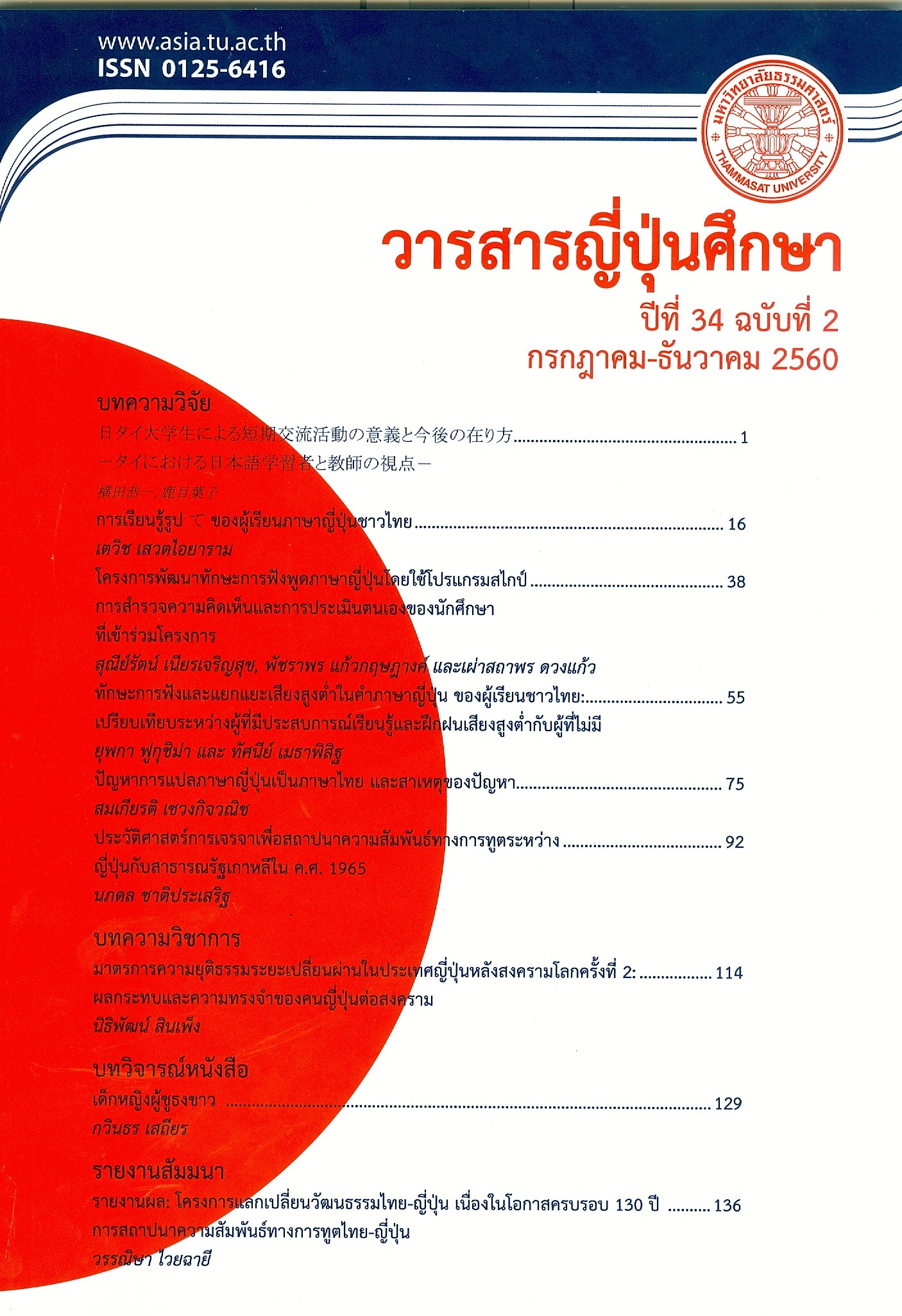บทวิจารณ์หนังสือ: เด็กหญิงผู้ชูธงขาว
Keywords:
Book review, The Whit Flag, Okinawa Island, The Asia-Pacific WarAbstract
The flag in white includes a red circle in the middle. It is the national symbol of the Japanese. Without the red circle, the white flag implies servitude. As such, this flag declares a joy of “survival” and becomes a history of war that reflects brutality. A tale from a small flag was unfolded in the translated literature entitled “The Girl with The White Flag” written by Tomiko Hika, and translated by Chatnakorn Ongsink (2nd edition in 2010, 176 pages, with illustrations by the Matichon Press House). The main content is divided into six chapters; Chapter 1-5 includes four episodes each, Chapter 6, three episodes, and at the end, there is one episode, for a total of twenty-four episodes. The author describes her survival
after the Asia-Pacific War on the island of Okinawa, the fate of the refugees, and the lives of the soldiers who died; some had even been killers of their fellow countrymen. In spite of this painful story, the readers discover that love exists even in the war, along with empathy and hope to survive. Child-based narrative techniques will create emotional depression but it makes sense to politicize remembrance. In addition to being a tool to teach the younger generation to know how bad the war was, readers will see Okinawa Island from a different perspective. Although the narrative of the book is more historical, rather than an in-depth insight or chronology of the war, the author has cited sources for readers to study further. The war may seem to be far from our Thai lives, but it is the real story of a 7 years old girl, which is an example for the general public, not specific to only young readers. It was honored by the American Library Association as a recommended book, and world leaders can be recommended to read it as well.




